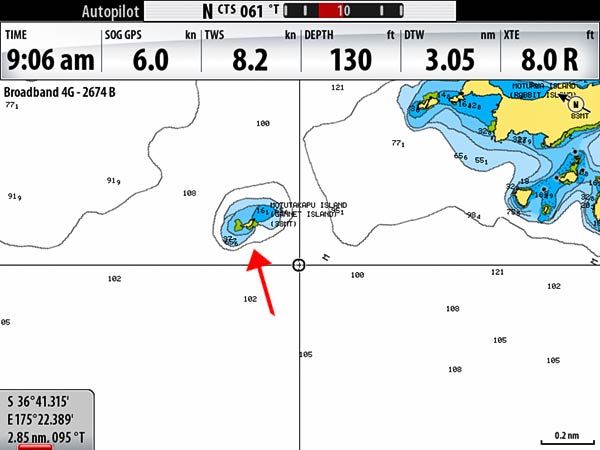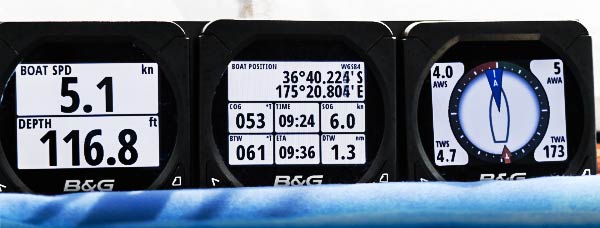December 23, 2015
Well, with our Simrad 4G radar and Simrad chartplotter, I’d say more non-existant than bad! Let me back up.
MARPA stands for Mini Automatic Radar Plotting Aid. After giving it a radar target to “look at,” it should be able to track that target and show its course and speed. The big guys have had this for a long time – commercial ships and work boats. It’s a newer feature in the small, less expensive radars we use on pleasure craft. I was excited that our Simrad system had MARPA, until I used it. Then, not so much. It really doesn’t work.
I bring this up now because of a recent article on the excellent Panbo blog (a website all about marine electronics) titled “MARPA on small radars, is Navico 4G especially bad?” Here’s a link. (By the way, Navico makes our Simrad equipment.)
The conjecture that none of the recreational systems have a very good MARPA was interesting to me, but I do think that Simrad (Navico) really has it wrong. It’s useless, with one exception: It leaves little dots where the target has been. I look at those to guess the approximate course and speed of the target. That’s all I use MARPA for.
Today I was playing with the system (only because of the Panbo article) and tracking one particularly erratic target. Below is an animation of screen shots I captured during the course of about 1 minute. See for yourselves…

Odd that this was changing course and speed so much… SINCE IT’S A ROCK!

(For those of you who would like more explanation, on the animation, our boat is at the center of the screen near the bottom edge. The MARPA target is just off to the right of center. It’s the object with the black arrows and lines coming from it in various directions. The black arrows indicate where the ‘rock’ will be in 30 minutes at it’s current course and speed.)
“Yea, yea,” I hear you saying. “Your poor system had a hard time tracking that island because your boat was getting tossed around like a cork!”
No sir. See the video I took at the same time…
While the boat was rolling and yawing a bit (as you can see from our course line in the animation), the seas were very calm and there was little wind. We were motoring. We’ll have to come up with a better excuse than the rough-seas/small-boat one.
While I do very much like our Simrad equipment, I am coming to the conclusion that perhaps they should have paid a little more attention in math class. This is not the only calculation that seems more than a little off in our Simrad system. Here’s a quick picture I took today because I just couldn’t believe what our B&G instruments (also Navico) were reporting for true wind speed…
The wind instrument display shows the true wind behind us at 4.7 knots. My calculations show that for a boat speed of 5.1 knots (the B&G instruments use the speed through water) and an apparent wind at about 8° off the bow to port, the true wind would be 206 degrees to port at about 1-1/4 knots.
Common sense and an approximation of the above picture tells me that if the boat is moving forward at about 5 knots, and the apparent wind is on the nose at 4 knots, than the true wind must be from behind at 5.0 – 4.1 or 0.9 knots. (Yes, the wind instrument seems to be pretty well calibrated – again, another excuse is needed here as well.)
I think some of this might be due to smoothing or buffering, but I’ve seen this a lot, especially at low wind speeds. The chart plotter will often display something completely different, and also often wrong.
I’m sorry to take you to task for this Simrad. I really do love our system, especially the 4G radar. I don’t know that anyone does it any better. -Rich






